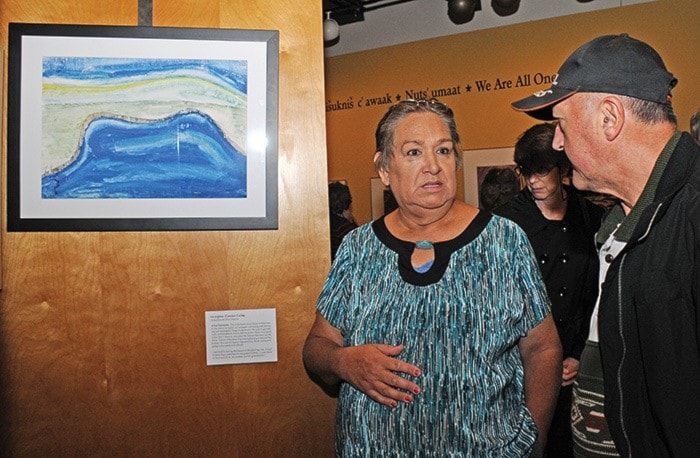Paintings hanging in galleries often elicit emotions in people—they love them, they hate them, they find them confusing—but the emotions filling the Alberni Valley Museum’s gallery were palpable last week, as the We Are All One exhibit opened.
Fifty years ago, children at the Alberni Indian Residential School (AIRS) created paintings in an extra-curricular art class led by late artist Robert Aller. Now, a selection of these paintings have returned to the Alberni Valley in an exhibit honouring residential school survivors.
Many of the artists/ survivors were on hand for the opening.
“This has been an amazing journey,” says Dr. Andrea Walsh, a visual anthropologist at the University of Victoria. Walsh is one of the people behind the exhibit, who has done an enormous amount of research to find the artists and gain permission to exhibit the work.
The artwork was unveiled in a ceremony at the Alberni Athletic Hall in March 2013, when the artists were reunited with their paintings. The artwork has also been included in some of the truth and reconciliation process for residential school survivors.
There are 75 pieces in the AIRS exhibit, 37 of which are included in the show, Walsh said. Some artists have not yet been found, so their work is not displayed; others have declined to put theirs on display.
Georgina (Cootes) Laing is one residential school survivor who allowed her work to be included: a picture of home in Kildonan, where she grew up with the Uchucklesaht First Nation. “I didn’t paint the houses (on the beach) because I knew what was going on in some of them,” she said.
Some of Laing’s paintings that she completed while in treatment on Quadra Island are hung beside the piece she did in Aller’s class; she included them to show the after-effect of attending residential school. She asks that they not be photographed as they are not part of the original intent of the exhibit.
“What I realized later is (residential school) impacted people. I feel it’s a really good thing to educate people on what happened so it never happens again. If they can feel it, they seem to be able to remember it.”
Huu-ay-aht Chief Councillor Jeff Cook, also part of the survivor’s group, has a piece in the exhibit, and although it is his signature on the piece—depicting a black crow on a gray background—he admits he doesn’t recall painting it.
“When I first saw my painting back in April 2012, it was a very emotional thing for me,” he said. “it was something from my past, something physical I’d never had a chance to hold onto when we left (the school).
“We left with what we had, our suitcase and our shoes. We never took our personal belongings because they generally threw them away.
“It’s a godsend Mr. Aller saved these paintings.”
We Are All One will be at the museum until March 7, 2015.
editor@albernivalleynews.com
Twitter.com/AlberniNews
